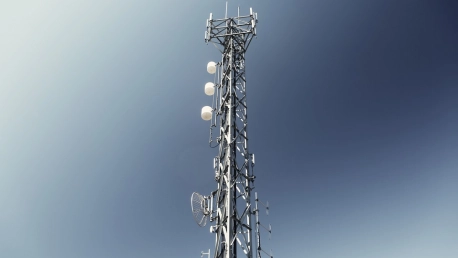Invented in 1994 by Ericsson, the Bluetooth technology serves in short-distance data traffic. Data exchange via Bluetooth employs “short-wavelength UHF radio waves in the ISM band from 2.4 to 2.485 GHz” and all such device manufacturers have to meet the Bluetooth Special Interest Group (SIG) standards in order to be market compliant. SIG appeared in 1998 as a result of the joint efforts of Ericsson, IBM, Intel, Toshiba and Nokia, and currently holds approximately 25,000 member companies. Recently there has been a lot of talk surrounding the launching of Bluetooth 5.0, a new standard that aims at IoT oriented expansion beyond the personal-area network (PAN) and app-paired-to-device concepts, which Bluetooth employed so far.
Pending a necessary gradual incorporation of the new chips into the various devices currently in production, this advanced Bluetooth type should be able to cover the surface of an entire home/yard, thus eliminating the need for home gateways.
Bluetooth 5.0: when?
Bluetooth 5.0 was announced on 16 June – a moment when SIG presented the new capabilities and the roll-out schedule. It won’t be until late 2016 or early 2017 that this new technology will actually reach the market. The technical details were “scarce” in the June presentation, therefore there are not many online sources that summarize the event – all that was to say seems to have been said before that day.
Consumer products incorporating BT5 will probably appear on the market sometimes in late 2017, if all goes as planned.
Bluetooth 5.0: what?
Based on the announced specifications so far, the new Bluetooth standard should bring a few strategic improvements (as detected by the above InformationWeek source), consisting of:
- A wider range, more exactly four times the range of its predecessors;
- A greater speed, twice the transmission speed of the current Bluetooth V4.2;
- A data broadcasting bandwidth increase of 800 percent, aimed at incorporating dedicated beacons and other accessories, all via “connectionless” traffic;
- A more lasting battery life for the devices that employ Bluetooth communications.
Of course, this new technology standard requires additional capabilities for all involved gear, therefore it would be wise for any IoT interested parties that count on Bluetooth elements to follow all SIG announcements in order to be able to plan ahead when it comes to the technology of the future. Even though the already existing chips would be compatible with the new BT5, the other network elements should be designed/acquired in view of this new element, and not by ignoring it.
Bluetooth 5.0: why?
As we have pointed out before, the BT5 wants to bring better mobility and coverage into this particular technology. It all pans out into users being able to control smart home elements and devices from any chosen point of their residence, smart building and offices also being included in the plans of future Bluetooth-based inter-connectivity.
Advertising also has an eye on BT5 since location services would highly benefit from it. Significantly more information could be conveyed to various devices without connectivity requirements – or, in other words, devices would be able to “speak” with each other in longer sentences, passing data from one to another via Bluetooth. “Richer, more intelligent” data is next in this types of data exchanges, adding location and navigation functionality or enhancing it where it already exists.
For the moment, advertising packets in Bluetooth transmissions consist of 47 bytes each, out of which 31 bytes carry actual data. BT5 will increase this size limit and allow bigger, more coherent beacon advertising actions, as Ars Technica underlines.
A few bold figures
A slightly older source from 2016 ventured a certain speed and area coverage for the future Bluetooth standard: 2 Mbit/s and 120 meters (as opposed to the current BT version’s 25 MBps transfer speed and its 90 meters transmission range). The new transport discovery service (TPS) standard provides a viable alternative to 6LoWPAN standard 802.15.4 and Zigbee in what mesh networking is concerned.
Another ventured figure regards the share of the IoT Bluetooth-interface devices on the market. Currently 8 percent of the smart home devices rely upon BT, but the estimations show that there will be over 26% such devices in 2021.
It is well worth noting that 8.2 billion devices around the world employ Bluetooth technology at the moment. Smartphones, tablets, laptops, beacons, cars, IT peripherals – a wide array of tech items integrate this connectivity type; and it seems the future holds even more Bluetooth transmissions than the present.
Concerns regarding Bluetooth 5.0
It is no surprise that the main concern regards the cyber-security status of all devices endowed with this new Bluetooth hardware. Many of the user comments listed below the BT5 article featured by PC Mag revolve around this issue: how will users be safe and keep their privacy when improved, wider range data transmissions will be roaming around their devices?
Perhaps cyber-paranoia is a bit trendy and potential users worry too much, as well as prematurely. Nevertheless, this privacy protection concern surrounds all IoT-related advancements, and it has also been proved how remote hacking works – ignoring the possible cyber-security incidents will not make them go away. For the moment, the price of connectivity is lowered cyber-security, materialized in assumed risks or even in consumed data breaches, hacks and intrusions.
Just think how Bluetooth 5.0 is expected to boost broadcasting with a stupendous 800 percent- weighing that against the cyber-security worries might appease the feeling that soon there will be almost no place on Earth out of the range of some sort of digital transmission.









